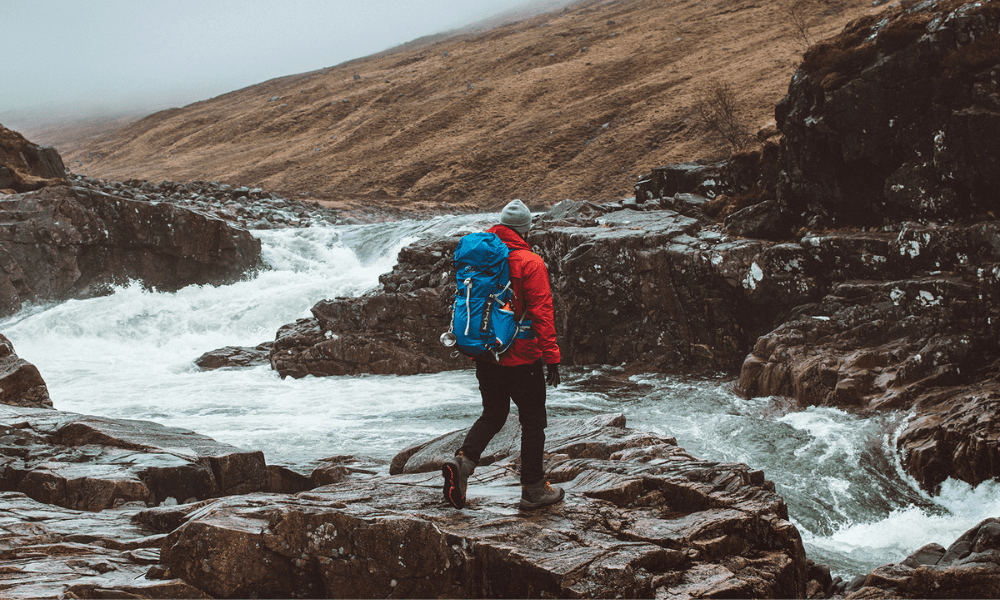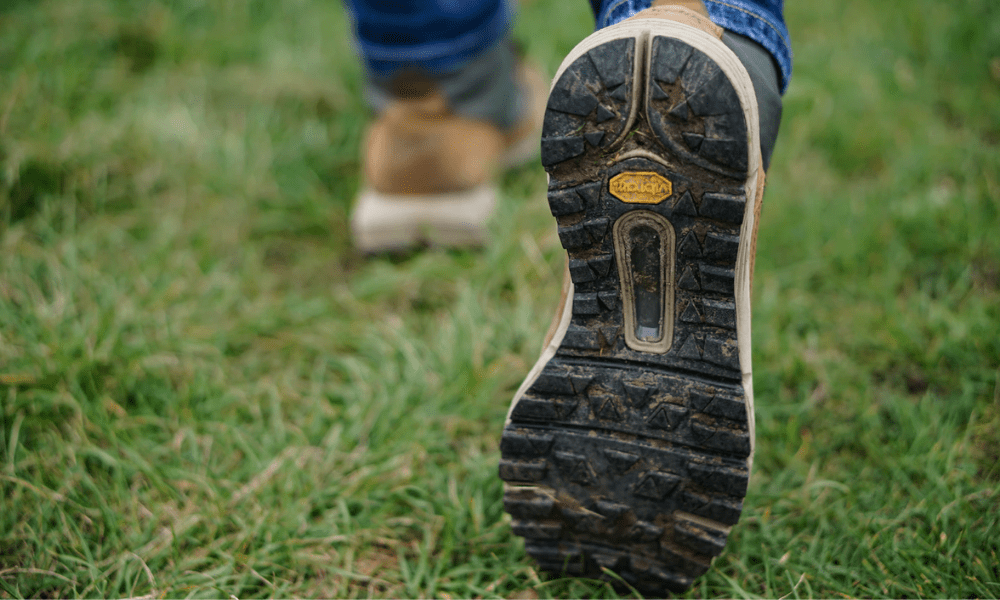![]() Hiking boots can be made of many different materials, and it can therefore be difficult to find out which ones suit your needs. In this article, we will take a closer look at the qualities of the different materials. Then it may be easier for you to choose the right pair of hiking boots for your next hiking or backpacking trip.
Hiking boots can be made of many different materials, and it can therefore be difficult to find out which ones suit your needs. In this article, we will take a closer look at the qualities of the different materials. Then it may be easier for you to choose the right pair of hiking boots for your next hiking or backpacking trip.![]()
Synthetic materials
Synthetic materials, such as nylon and polyester, are often used as an upper on hiking boots. A synthetic material is man-made through chemical processes. Basically, the advantages of the synthetic materials are that they are extremely durable, quick-drying and easy to clean. In addition, they are significantly lighter than leather, which is why you get a lightweight hiking boot here. Hiking boots in synthetic material are generally very soft, which makes them comfortable to wear. The synthetic materials are breathable and light, and therefore they are obvious in a hot climate or for warm feet.
The materials are good for transporting moisture and sweat, so the indoor climate in the boots can be kept comfortable. You must be aware that these materials are not waterproof, and it may therefore be a good idea to keep an eye on whether the boot also has a waterproof membrane layer in the upper. Although the synthetic materials are extremely durable, you will often find that the hiking boots are reinforced with rubber in exposed areas, in order to extend the life of the materials.![]()
Natural material
The natural material leather is extracted from the skins of various animals, and is made into leather by a so-called tanning of the material. Many people associate leather with a classic stiff and heavy hiking boot, but a boot with an upper made of leather has many other good properties. Leather is a very durable material that can last for many years. Leather is very flexible, can withstand many challenges and give your feet good protection in challenging terrain. Leather is good for keeping warm, and it is therefore obvious in a colder climate or if your boots need to be able to withstand a longer hard hike.
Leather comes in different varieties, each of which has its qualities. Core leather consists of the upper side of the animal skin, is not surface treated and is extremely herring strong. The closed surface makes the core leather water-repellent, but a bit less breathable and a long time as to dry should it be soaked. Suede is made from the back of the animal skin, has a rough surface and is lighter than core leather. Suede is a little less herring strong than core leather, but far more breathable and cheaper to produce.

Membrane
Membrane is a synthetic material that contains a lot of microscopic holes. The holes give the material waterproof properties, which are still extremely breathable. This happens because liquid water from outside can not penetrate, while steam from inside can well escape. The membrane thus makes your hiking boot waterproof, while the feet can still get rid of moisture and sweat. These qualities make the membrane very popular as the innermost layer in the upper of hiking boots, as here you will fulfill the desire for both dry feet and a good indoor climate.
All boots with a membrane layer will be categorized as waterproof, but it is important to point out that they cannot make it out of a solid rubber boot. Do not expect the boots to keep your feet crisp if you cross streams or are out in very heavy rain. A membrane boot will be far more waterproof than a boot without, but all materials have their limitations. Membrane is a good idea if you need to use the boot in cold and hot climates, where there is a possibility of rain and moisture to a reasonable extent. If you are in doubt about which type of boot to choose, read our guide to hiking boots .![]()
Vibram
Vibram is an Italian bowl and shoe brand located in the town of Albizzate. They are world famous for their Vibram soles and Five Finger shoes. Over the years, Vibram has become synonymous with a quality stamp for solid and shock-absorbing soles in hiking boots. Vibram soles are made of a groundbreaking strong rubber material that provides grip, strength and stability for hikers. Many tests in both the laboratory and the real world have shown that Vibram’s rubber formula is among the best in the world. You can recognize the Vibram soles on the classic yellow logo that is seen either on the bottom or on the side.
If you choose a boot with a Vibram sole, you get good shock absorption and a special undercut heel, which is ideal when you go up and down. These qualities give a great pleasure to your feet, and ensure you comfort over a long period of time. The soles have a solid grip in the form of the pattern, which helps to give you stability in both dry and wet challenging terrain. There is no grip at the arch, which allows the foot to move naturally. The rubber is very non-slip and the chemical combination in the rubber makes it extremely herring strong.





